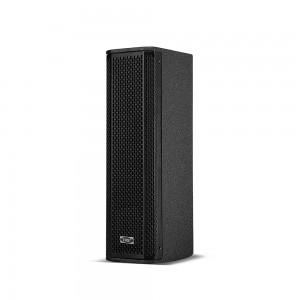1. The problem of signal distribution
When several sets of speakers are installed in a professional audio engineering project, the signal is generally distributed to multiple amplifiers and speakers through an equalizer, but at the same time, it also leads to the mixed use of amplifiers and speakers of various brands and models, so that the signal distribution will create various problems, such as whether the impedance fits, whether the level distribution is uniform, whether the power obtained by each group of speakers is qualified, etc. It is difficult to adjust the sound field and the frequency characteristics of the speakers with an equalizer.
2. Debugging problem of graphic equalizer
Common graphic equalizers have three types of spectrum wave shapes: swallow type, mountain type, and wave type. The above spectrum wave shapes are those that professional sound engineers think of, but they are not actually required by the sound engineering site. As we all know, the ideal spectral wave shape curve is relatively stable and steep. Assuming that the spectral wave shape curve is adjusted artificially after joy, it is conceivable that the final effect is often counterproductive.
3. Compressor adjustment problem
The common problem of compressor adjustment in professional audio engineering is that the compressor does not have an effect at all or the effect is too much to gain the opposite effect. The former problem can still be used after the occurrence of the problem, and the latter problem will cause inflammation and affect the sound engineering system. Operation, the specific performance is generally that the stronger the accompaniment sound, the weaker the vocal voice makes the performer be inconsistent.

4. System level adjustment problem
The first is that the sensitivity control knob of the power amplifier is not in place, and the second is that the audio system does not perform zero-level adjustment. The sound output of some mixer channels is slightly pushed up to increase a lot. This situation will affect the normal operation and fidelity of the audio system.
5. Bass signal processing
The first type of problem is that the full-frequency signal is directly used to drive the speaker with the power amplifier without electronic frequency division; The second type of problem is that the system does not know where to obtain the bass signal for processing. Assuming that the full-frequency signal is not used for electronic frequency division to directly use the full-frequency signal to drive the speaker, although the speaker can emit sound without damaging the speaker unit, it is conceivable that the LF unit emits a full-frequency sound alone; but suppose it is not in the system. Obtaining a bass signal in the right position will also bring extra trouble to the on-site operation of the sound engineer.
6. Effect loop processing
The post signal of the fader should be taken to prevent the microphone from whistling on the scene caused by the out-of-control effect. If it is possible to return to the scene, it can occupy a channel, so it is easier to adjust.
7. Wire connection processing
In professional audio engineering, the common audio system AC interference sound is caused by the inadequate wire connection processing, and there are balanced to unbalanced and unbalanced to balanced connections in the system, which must conform to the norms when used. In addition, the use of defective connectors in professional audio engineering is prohibited.
8. Control problems
The console is the control center of the audio system. Sometimes the high, middle and low EQ balance on the console is increased or attenuated by a large margin, which means that the audio system has not been set up correctly. The system should be re-tuned to prevent over-adjusting the console’s EQ.
Post time: Oct-21-2021
